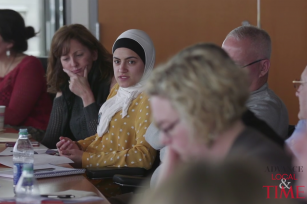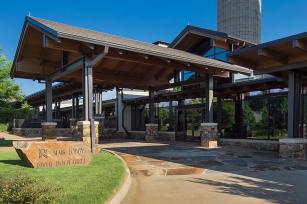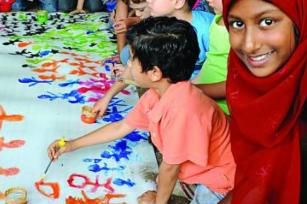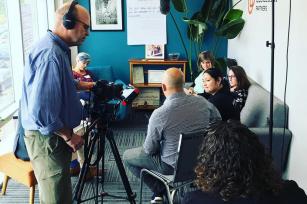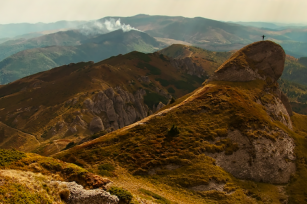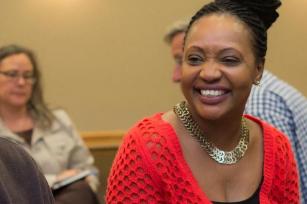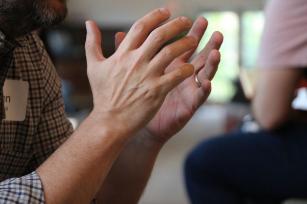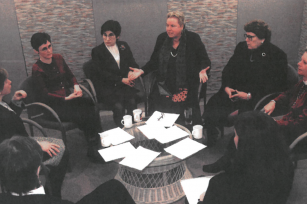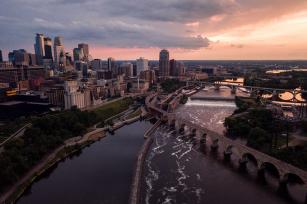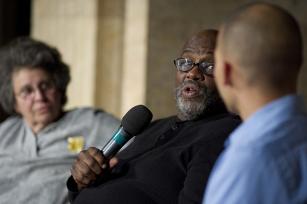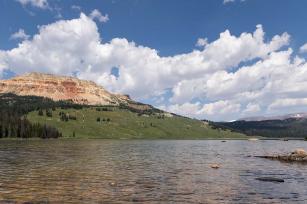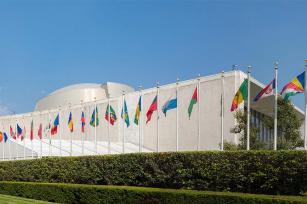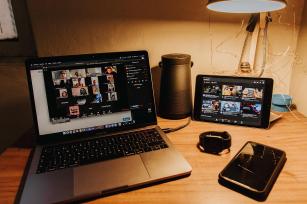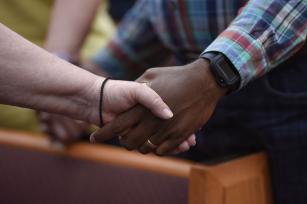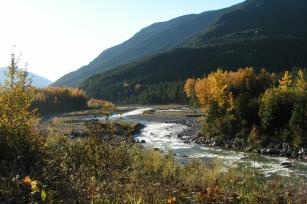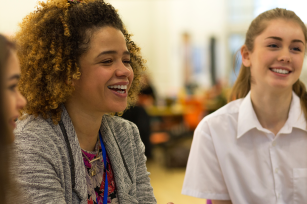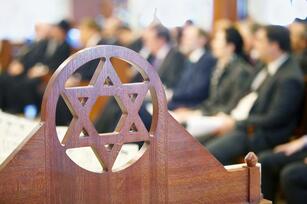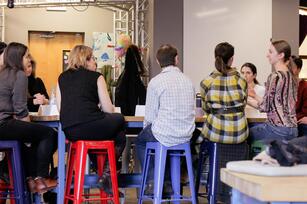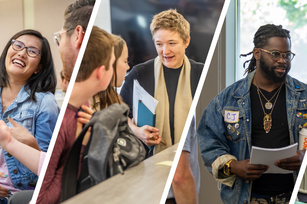
Breadcrumb
- Essential Partners
- Our Impact
- Impact Stories
- The Northern Forest Dialogue Project: Dialogue to Environmental Policy
The Northern Forest Dialogue Project: Dialogue to Environmental Policy
“I learned to listen. I learned to wait my turn. I know that new friendships were formed, one with someone I previously perceived as the enemy.”
As the economic value of forested lands dramatically increased in the 1980s, large areas of forest in New York, Vermont, New Hampshire and Maine were sold for non-forest use. Such a substantive change in land use promised to elicit a range of vocal opinions, so Congress funded a public process from 1990 to 1994 that brought together stakeholders from the four states, along with the US Forest Service.
One of those stakeholders was Charles Neibling of the New Hampshire Timberland Owners' Association. In 1992, he commented that, while the public process was important, he thought the key stakeholders should also encounter each other in a different setting. “We should retire to the woods to get to know each other, develop some trust, and see if we can move beyond the 'us vs. them' mode."
Organizational consultant Grady McGonagill and Essential Partners then began working with a steering committee to coordinate multiple private meetings and retreats. The ultimate goal was to build the relationships that would serve as a foundation for a formal public process.
The First Retreat: Sharing Hopes and Visions
In a fireplace-heated lodge in Fairlee, VT, in February of 1994, with space heaters working against the zero degree outside air, 23 participants met to discuss their concerns, fears, hopes and visions for the Northern Forest. Their letters of invitation had asked them to come as individuals, not as representatives of organizations; to bring with them a willingness to listen openly and speak respectfully; and to set aside the urge to make persuasive speeches.
The group identified sources of tension and distrust, which included fear of one another’s “hidden agendas,” histories of misinformation, and frequent use of buzzwords. Then the group turned its attention to the work ahead: to set aside polarizing habits, increase mutual understanding, and identify areas of common ground. The group developed a shared appreciation of Adirondack history, especially those who hadn’t lived it, and greater mutual understanding between those working in the forest product industry and environmentalists about how they viewed various forest practices.
One participant said, "I learned to listen. I learned to wait my turn. I know that new friendships were formed, one with someone I previously perceived as the enemy." Another observed, “I appreciated the opportunity to demystify adversaries.” New opportunities emerged, as another participant noted, "I learned that there are two specific areas in forestry where I can work with others. These were new areas of opportunity that I was unaware of."
The Second Retreat: Perspectives and Policies
During the second retreat in Craftsbury Common, VT, the group delved into substantive issues related to private and public land ownership and stewardship; the impact on local economies of environmental regulations; and the tensions between short and long term approaches to enhancing the quality of community life; and the economic pressures facing small communities. The group also addressed patterns in their own communications and relationships.
People were able to truly listen to one another’s underlying values and concerns. One environmentalist said he appreciated being outside "the usual forum" in which "they are forced to defend their practices because we are attacking them." A number of participants reported calling each other to check out rumors, rather than simply assuming those rumors were true.
Many lamented how long they had waited to come together in a new way: "It's too bad that we don't get together and deal substantively with the issues until there is a crisis and then we behave in a reactive way.”
By the end of the meeting, participants decided to focus on dialogue efforts on the state-level, and then re-convene the larger regional steering committee. Conversations at the regional level proved fruitful, thanks to established norms for how participants would communicate with one another. Discussions elevated an appreciation for the complexities of the issues and greater understanding among people with different perspectives.
“Bringing Dialogue Back Home” to the Adirondacks
The regional dialogue retreats in Fairlee and Craftsbury Common were a source of inspiration and new relationships for many participants from New York. Over several years, people had never examined what they might have in common and what beliefs they held about each other that were inaccurate. After the regional retreats, they had set the foundations of mutual understanding that would help them begin to work together. They seized upon the opportunity to "bring dialogue back home" to the Adirondacks.
Four of the New York-based regional dialogue participants recruited two other key stakeholders and formed a planning group of six for a New York Dialogue. The six planners were representatives of environmental organizations, town governments and the forest product industry.
In the late Winter of 1995, Maggie Herzig had phone conversations with these individuals (and others) to learn about the "old conversations" and their hopes for moving toward more productive engagement. During the next three months, she and Grady McGonagill worked closely with the planning group to plan a two-day dialogue retreat in June. Together, they created an invitation list, set general goals, and designed an invitation and meeting structure. This retreat turned out to be the first in a series of three, all held at Garnet Hill Lodge in North River, NY.
On June 25, 1995, 19 people with diverse interests and perspectives gathered for a two-day retreat, surrounded by forest land and away from offices and telephones. Grady McGonagill and Maggie Herzig worked with two facilitators from New York, Sandy Schumann and Fredda Merzon.
After reviewing the ground rules, the participants engaged in EP’s trademark “stereotyping exercise,” designed to reduce assumptions and preconceived ideas. The group then identified the key priorities they hoped to address:
- Goals for the mix of public and private land
- Representation on the Adirondack Park Agency (APA)
- Property tax reimbursement to towns
- Economic development
- Shoreline protection
The participants were pleased to discover that they fully agreed that the issue of economic development was crucial to the Adirondack Park and its residents. To move things forward, a member of the APA Economic Affairs Committee offered to send materials to all participants to elicit their feedback.
On the subject of tax policy, the group formed a subcommittee that would further discuss reform of the Forest Taxation Program and report ideas back to the full group at a future dialogue. Participants felt it was particularly noteworthy that such a diverse group had formed a task force on forest tax reform, an area on which they came to appreciate there was considerable common ground.
Discussions on the topic of the public/private mix acknowledged the complexities of the issue and a need for greater understanding among people with different perspectives. There was general agreement that the APA needed to be reformed, and ideas were generated about ways the APA could interact with landowners and residents in a more helpful manner and with a more open process of decision-making.
Regarding shoreline protection, the group acknowledged that this issue would require further dialogue, since there were a wide range of values and perspectives around shoreline protection. The people and organizations that could partner to protect shorelines had suffered deep distrust in the past, and continued trust-building emerged as a core goal of the dialogue process.
The Second New York Retreat: Clarifying Visions
The New York Dialogue group held their second retreat in October. At that retreat the group of 17 spent all of their time in one large group. The most important topics selected were the following:
- How we communicate
- What is our vision (or what are our visions) for the Park
- Property taxes
- Similarities and differences between the Park and the Tug Hill Region.
First, the group discussed their personal vision statements, and then asked each other about the meanings of their visions and the language they used to express them.
Participants inquired about the meanings of such terms as “hamlet,” “prosperous local community,” “wilderness,” and “access to wilderness.” They also discussed local vs. regional planning and control, and local access to land use information.
Many people expressed a desire to have access to information that would shed more light on, and invite fewer polarizing speculations about, the relationship between land use regulations and economic sustainability. At the end of the meeting, the participants asked the planning group and facilitators to convene a third meeting.
The Third New York Retreat: Dialogue to Action
A third retreat was held June 3-4, 1996, and once again the facilitators helped the participants set their own agenda.
The first session focused on a topic that was currently polarizing the region: proposed cuts in the Adirondack Park Agency's budget and staff. The facilitators used a structured format to elicit concerns in a manner that would reduce blaming and negative attribution and equalize “air time.” The second session was spent discussing issues that could be resolved in an update of the state land use master plan; such an update, all agreed, was long overdue.
In the evening, the group heard a report from its "spin-off" committee on reform of forest taxation policy and they discussed two additional topics: joint action to reduce acid rain and the limitations of constitutional restrictions with regard to the forest preserve when "health and safety" is of concern. Dialogue on the latter topic, which was a key issue in debates about the blowdown of 1995, demonstrated the limits of the usual, divisive formats for public debate.
Through dialogue, participants came to a much better understanding of the assumptions with which each person had entered the public discussions and cleared up misconceptions they had formed about each other's values and motivations during the public process.
The discussion about the divisive public debates at the time of the blowdown probably heightened participants’ motivation for discussing the final agenda topic that had been chosen on the first day, entitled: “What should be our process for effecting change in the Adirondacks?”
Recognizing that distrust and aggravation is heightened when people feel confused and/or shut out of policy-making discussions, the participants brainstormed about improved processes for public input.
In the end, the participants who were associated with particular agencies took the ideas generated by this dialogue group back to their respective agencies. Later that summer, they wrote to all of the dialogue participants about efforts they were undertaking to create new mechanisms for inter-agency networking and to improve public participation practices.
Related Impact Stories
Testimonials

Veronique Cavaillier, Director of Eastern Trade CouncilI think Essential Partners' training should be mandatory in every legislature. I think it should be a requirement.
The Council of State Governments

Belle AbayaTogether, we married our ideas to create a dialogue model that took into consideration our young people’s particular needs, and our culture.
The Conflict Resolution Group Foundation, Philippines

Bob Bordone, Expert and AuthorEssential Partners does the best work in the field of dialogue and communication.
Harvard Negotiation & Mediation Clinical Program, Co-Founder

Rebekah Shrestha, SVPEssential Partners has played a catalytic role in our ability to facilitate dialogue time and time again, and we could not have done this work without them.
Belfer Center for Innovation & Social Impact and Office of Strategic Planning, 92NY

Douglas Stone, Sheila Heen, and Bruce PattonWe owe a debt of gratitude to Laura Chasin and her collaborators at Essential Partners… From them, we have learned about the transformative power of telling one’s story and speaking to the heart of the matter.
Difficult Conversations

Kim Davidson, OmbudsI’ve gained not only confidence but tools. The Essential Partners training was worth every penny.
Oberlin College, Ohio

Bill Scott, Project DirectorThere was a remarkable change in the way we were able to communicate with one another following the facilitated conversations.
Massachusetts Department of Mental Health

Matthew Sandikie, Project PartnerThis has been quite different from other discussions in Liberia about peace. While many processes have been about how to reform ex-combatants, this was about how we may hold our own views but live together peacefully.
Liberia

Program ParticipantThe highlight for me was the interconnectedness of the participants’ views, mutual respect, and range of experiences within the group
Montana

Meirav Solomon ’20Dialogue not only teaches you how to interact and understand more deeply those around you, it also teaches you more about the world around you and yourself. I think dialogue is super important to my growth as a student, a global citizen and a human being. I have learned to listen, I have learned to speak out, I have learned how to access my stretch zone (where I feel uncomfortable speaking but not turned off) and I have learned where my limits are.
Cary Academy, NC

Misty Stoll, School Board TrusteeThe Sheridan Community has changed in the best way since the Essential Partners training. The Center for a Vital Community has been holding monthly dialogues. I’m going to facilitate the upcoming one. What’s great is that we’re attracting a much more diverse group of participants. There are always the regulars who come, but now we’re also getting conservative Republicans to come as well—politicians come, even the Sheriff comes.
Wyoming

Andrew Wulf, PrincipalThe community dialogue was instrumental in helping us create a new policy around class rank. Though a controversial topic in the community, the dialogue EP helped us run ensured all voices were heard and valued. Regardless of how people felt with the final result, one parent summed it up best for us, ‘sometimes the process is more important than the outcome’.
Newburyport High School

Program ParticipantThis is a different tool for engagement. It’s not about you, it’s about others. It involves the art of listening and sincerely talking from the heart
Interfaith Mediation Centre, Nigeria

Program ParticipantI felt an amazing sense of accomplishment when the Essential Partners training ended; that I'd done something important for my community and something important for me.
Massachusetts

Undergraduate StudentI have never heard people talk so openly about race, especially in a class setting. Everyone was respectful and honest at the same time. The dialogue structure helped me learn about my peers and helped me feel more comfortable than I ever have about discussing controversial issues.
Gordon College, Massachusetts

Romeo McCauley, Project PartnerI learned that I can build relationships, that I can be connected to anybody who I want to be connected to, no matter how difficult it is
Liberia

Imam Sani IsahThrough this training, we will have more people in the stream of work that we do and become better equipped with the know-how, skills and techniques. But most important, together we will sow a seed that will germinate and become a source of the antidote to terrorism, fanaticism, bigotry and extremism.
Nigeria

Program ParticipantI did not anticipate having as many concrete takeaways as I do. I feel there is an immense practical application.

Program ParticipantI am now open to new views and can moderate my impulse to debate or persuade others of different views
Montana

Nicki Glasser, Policy CoordinatorWhat surprised me was how much you could transform a relationship during a three-hour conversation.
Transformation Center, Massachusetts

Program ParticipantBefore, I thought all dialogue that does not culminate in solution was considered equivalent to failure. Now I see that dialogue is a stage complete in itself.
Burundi

Program ParticipantThis is the best adult learning experience I have had in the past five years. I wanted to learn new skills—I did!

Etionette Nshirmirimana, Burundian Master TrainerI realized that by using the “dialogue” approach, people could talk of what is deep in their heart, especially things that have harmed them.
Burundi

Belle AbayaWhat is special about Essential Partners' approach is that it promotes authenticity, reduces defensiveness, increases curiosity, and boosts connectedness.
The Conflict Resolution Group Foundation, Philippines

Linda Gryczan, MediatorInstead of demonizing and dehumanizing the other, we built a deeper connection. The fact that we disagree matters much less. It matters much more that we are neighbors in this community.
Montana Mediation Association

Seth Karamage, MediatorI am amazed at what came out—the way people shared their stories. This is not like a role-play; it really touched me.
Interfaith Mediation Centre, Nigeria

Janele Nelson, Mission DirectorIn these divisive times, Essential Partners has given my local YMCA and now the national YMCA a means to build bridges through dialogue, re-establishing foundations for constructive change to occur.
YMCA of Pierce & Kitsap Counties (WA)

Program ParticipantI read this comment from the 14th Dalai Lama: "Every change of mind is first of all a change of heart.” It seems appropriate for what we are doing.
Bayview, Michigan

Belle AbayaAuthentic conversations will lead people to reflect on their own thinking and transform their perspectives to include that of others.
The Conflict Resolution Group Foundation, Philippines

Misty Stoll, School Board TrusteeI ran for my local school board in 2018 and was elected. I use the skills in our meetings, whether I’m chairing the meeting or not. This makes the meetings much more productive. We don’t go over the same topics over and over again.
Wyoming

Anjali Bal, Associate Professor of MarketingOne of the things that we talked about was the ability to hear another person’s point of view, even if our minds aren’t changed. We have to remember that any sort of movement is movement. If we don’t acknowledge small movement, then we just stay on two different sides, and it’s all black and white, and we don’t hear each other.
Babson College, MA

Program ParticipantThis is a new idea, so many people speaking from their hearts. People can come together...if people can understand, they can change their hearts; then this can bring about more change.
Interfaith Mediation Centre, Nigeria

Undergraduate StudentI notice that my classmates take much more care when speaking about people who practice other religions. They make fewer assumptions, and they’re more careful with their words to make sure to avoid unintentional connotations.
Bridgewater College, Virginia

Cricket Fuller, The Christian Science MonitorThis wasn’t a policy debate [about guns]. Instead, two people whose backgrounds and views diverged in almost every way possible shared a moment of honesty that struck at the heart of the matter.
Boston, Massachusetts
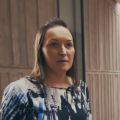
Louise O’Kane, Community Places[Essential Partners’] technique is used to explore contentious or divisive issues. So looking at renewable energy we thought this was an ideal opportunity to explore all the complexities of that issue. I found it a really useful method, and although this is the first time we’ve used it I am sure we’ll be using it again.
Northern Ireland, UK

Kate CellThe thing that always feels like magic to me—and I’ve used it in several meetings that I’ve had since—is how the practitioners start by setting out pacts or agreements.
Union of Concerned Scientists, Massachusetts

Windor DorkoAs a former rebel, I really believe that if we had known about dialogue, perhaps we would not have had a civil war.
Liberia

Peter Cooke, Immigration Dialogue ParticipantThere’s a real difference to people who are coming to meetings. They say, wow this is so different. They all said how people were more on the ball, more congenial. Now people see growing the economy as a way to unify the receiving community and immigrant communities.
New Hampshire

Janet Harris, Winthrop Rockefeller InstituteThe learning we received from Essential Partners has helped us open up space for people to have difficult conversations in a different way. The more we do this, the more we realize that dialogue has to be a part of all our work.
Arkansas
